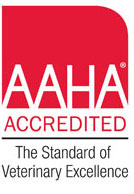Educational Articles
-
A cutaneous histiocytoma is a common benign (harmless) tumor of the skin in dogs, typically younger ones. Their development, appearance, diagnosis, and treatment are explained in this handout.
-
Cuterebra is the scientific name for the North American rabbit or rodent botfly. Cats are accidental hosts of Cuterebra larvae, and they are rarely evident from external skin inspection. A hole enlarges when the warble has matured, often leading to an infected empty cyst. Treatment depends on when the condition is discovered, and in many cases, antibiotics are used to treat secondary infections.
-
Cystine bladder stones appear to be the result of a genetic abnormality that prevents a dog from reabsorbing cystine from the kidneys. While bladder stones in general are somewhat common in dogs, cystine bladder stones are rare. Your veterinarian may be able to palpate the stones or may need to perform imaging studies such as a bladder ultrasound or a contrast radiographic study. There are two primary treatment strategies for treating cystine bladder stones in dogs: dietary therapy to dissolve the stones, or physical removal of the stones. Cystine stones have a high rate of recurrence, despite careful attention to diet and lifestyle.
-
This handout describes and illustrates this condition, and discusses the causes, clinical signs, diagnosis, and treatment options for degenerative disc disease in dogs. Surgical intervention is specifically outlined and rule-outs for other conditions causing similar signs are also discussed.
-
Dental disease is one of the most common medical conditions seen by veterinarians. The most common types of dental disease in cats are periodontal disease and tooth resorption. This article discusses the most common dental diseases in cats, signs, diagnostic procedures, treatments, and preventive steps to keep a cat’s teeth healthy.
-
The diaphragm is the muscular partition that separates the abdomen and the chest. Tearing or disruption of this thin muscle is called a diaphragmatic hernia or diaphragmatic rupture. The most common cause of diaphragmatic hernia is blunt force trauma.
-
The diaphragm is the muscular partition that separates the abdomen and the chest. Tearing or disruption of this thin muscle is called a diaphragmatic hernia or diaphragmatic rupture. The most common cause of diaphragmatic hernia is blunt force trauma.
-
Common conditions of pet ferrets include diarrhea, intestinal foreign bodies, parasites, heart disease, and various tumors. This handout outlines the causes, clinical signs, and treatment options for each of these conditions. Any variation from normal should be a cause for concern and should be immediately evaluated by your veterinarian.
-
Common conditions of pet rodents include respiratory diseases, gastrointestinal problems, dental problems, and cancer. Diseases of the skin may cause itching, hair loss or flaky skin in rodents. All rodents have teeth that grow continuously throughout their lives. Occasionally, these teeth grow too long and cut into the gums, causing pain when eating. Cancer is often seen in pet rodents, especially mammary (breast) tumors in rats and mice. Rodents with signs of respiratory or GI disease or evidence of a tumor should be seen by a veterinarian who can properly diagnose and treat the underlying condition.
-
Distichiae can be an irritating eye problem for many dogs. The abnormally growing extra eyelashes can cause chronic discomfort to the eye and potential vision problems. A thorough eye examination is necessary to assess the extent of any accompanying corneal injury and to rule out other causes of the dog's clinical signs. Various treatment options are available. The prognosis is excellent for dogs that do not show any clinical signs associated with their distichiae. For dogs with mild clinical signs, the likelihood that the condition can be managed with conservative treatment is good.

